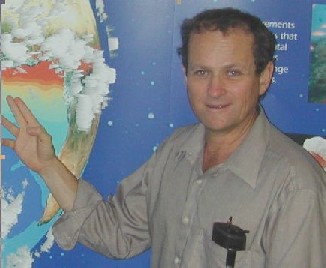
Dr. Ilan Koren, from the Department of Environmental Sciences of the Weizmann Institute of Science, caused a stir in the community of atmospheric scientists a few years ago when, together with his research partners, he proposed the idea that the influence of tiny particles floating in the air on the cloud cover on Earth could be one of the main causes of changes climatic, and that the local effect of this factor is greater than that of the greenhouse effect. However, the difficulty in measuring these particles, and the complexity involved in building a mathematical model to calculate their overall effect, according to the interrelationships between all their physical characteristics, created many areas of ambiguity. Now, it seems he has managed to gather enough evidence to convince the scientific community of his righteousness.
The process of cloud formation depends on the presence of aerosols, such as sea salt or desert dust. These small particles serve as a kind of "seeds", around which water vapor condenses, creating tiny water droplets. When the tiny droplets form, capsule heat is released, which causes them to rise to higher air layers. As they rise, they collide and merge with other droplets that are around them, and together form larger droplets. When they reach a certain size, the force of gravity overcomes the force of lift, causing them to fall from the cloud as raindrops.
In a previous study, Dr. Koren and his research partners found evidence that the presence of excess particles in the atmosphere, which originates in part from air pollution and forest burning, leads to an increase in the amount of tiny droplets, at the expense of the relatively small amount of larger droplets. This process causes a reduction in the amount of rain. The tiny droplets rise higher in the atmosphere, thus creating higher and larger clouds that last longer. This increases the cloud cover, and consequently to a greater return of the sun's radiation into space, and to the cooling of the Earth.
However, in another study, Dr. Koren showed that certain types of aerosols - those containing black carbon - may also reduce the amount of clouds and thus lead to a local warming effect. This phenomenon occurs because the black carbon absorbs part of the sun's radiation, thereby heating the atmosphere, while the ground - from which the radiation is avoided - cools. This phenomenon prevents the instability that characterizes a climate where clouds develop. And so, in a stable climate, fewer clouds form; When there are fewer clouds, there is less radiation returned to space; More radiation reaches the atmosphere and causes the earth to warm.
Some of the policy makers believe that by weighing all the components, the heating in the greenhouse effect with the effect of the aerosols (which are mostly cooling), it is possible to reach a balance, so that the total global climate change will decrease. Dr. Koren claims that the source of the problem is precisely the local climate change, and not the global one. Clouds will not rain heavy precipitation over the usual areas like rainforests, and will move to rain, for example, over the sea. Connecting the local effect to the global climate change caused by greenhouse gases, can lead to disastrous results.
Another question that arises is how and to what extent small and local particles are able to influence large weather systems. There is no doubt that the aerosols play a role in these systems, but some believe that this effect is small compared to the effect of major climatic factors such as temperature, pressure, the amount of water vapor in the air and wind directions.
To answer these arguments, Dr. Koren worked with Dr. Yoram Kaufman from the Godrad Space Center of the American space agency, NASA *. The scientists found a way to separate the effect of aerosols from the effect of meteorological factors. They used the AERONET ground sensor network and measured the effect of aerosol concentration on cloud cover and the amount of radiation they absorb at different times and in different places in the world. The absorption of radiation is slightly affected by the meteorological system, so if the skeptics are right and this system is the decisive factor in the processes of climate change, then there should be only a slight correspondence between the absorption of radiation in aerosols and the amount of clouds. But in the study of Kaufman and Korn, a very high level of agreement was found: as the amount of aerosols increased, the cloud cover increased, and as the radiation absorption of the aerosols increased, the cloud cover decreased. This result was obtained in all places and in all seasons. These findings were recently published in the scientific journal Science.
"We hope that this research closes the circle," says Dr. Koren, "and we hope that the decision makers will begin to look at the issue of climate change from a new angle, which will also take into account the local impact of the aerosols, and not just their global impact."
* Dr. Yoram Kaufman, one of the leaders and most prominent in the study of aerosols in the atmosphere, was recently killed in a fatal accident while riding his bicycle, near the Goddard Space Center.
Drafting and editing: H. J. Glykasm, translations and technical writing

One response
I strongly disagree with what my learned friend said
In the research I did, I was surprised to discover that the CO2 concentrations actually decreased due to the use of low-sulfur fuels, solar energy, etc.
I would like to inform my friends that according to the data of my learned friends, the radiation of ultraviolet rays and their effect on the earth does not endanger mankind as it did about 10 years ago
With you Barba, your friend in the profession Yosef